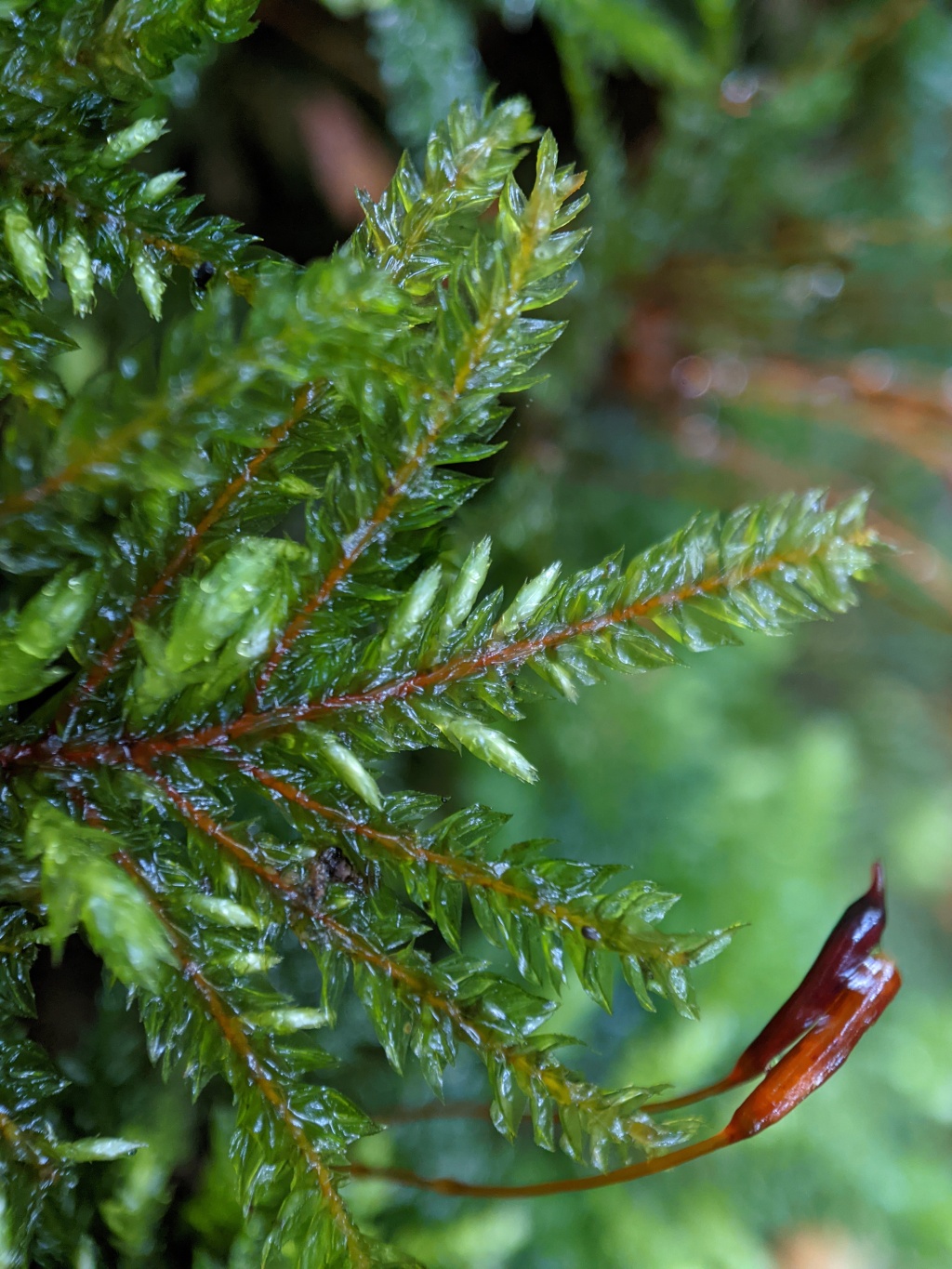Hypnodendron vitiense subsp. australe
TouwTufts on wet rocks, logs and soil. Stipe erect, to 9 cm long, tomentose at base only. Fronds predominantly palmate, to 6 cm wide, with sparingly branched to regularly pinnate branches. Stipe leaves appressed with ±spreading apices, narrowly to broadly triangular to triangular-ovate, widest just above insertion, 1.2–2.9 mm long, 0.7–1.5 mm wide, concave; apices gradually to abruptly acuminate; costa subpercurrent, percurrent or shortly excurrent; margins entire to sparsely toothed near apex, plane, unistratose, without a border; laminal cells linear 65–210 μm long, 6–12 μm wide, smooth; alar cells not differentiated. Branch leaves complanate, ovate-oblong, lateral leaves 1.8–2.9 mm long, 0.8–1.4 mm wide, spreading, dorsal leaves slightly smaller, plane; apices acute to slightly acuminate; costa subpercurrent to percurrent; margins serrate, with few or no geminate teeth, plane, without a border; laminal cells 35–95 μm long, 5–10 μm wide, faintly to distinctly prorate. Setae 2–4.5 cm long, brown to orange or reddish, smooth. Capsules inclined to pendent, narrowly cylindric, often only shallowly grooved, curved to straight, 3.5–5.5 mm long. Opercula rostrate from conic base, 1.5–2.5 mm long.
VRiv, GipP, OtP, CVU, GGr, EGL, EGU, WPro, HSF, HNF, OtR, Strz, MonT, HFE, VAlp. Also QLD, NSW, ACT and Tas. Usually beside creeks in rainforest or wet sclerophyll forest along and south of the Great Dividing Range or rarely under subalpine Leptospermum thicket lining creeks.
 Spinning
SpinningTouw, A. (1971). A taxonomic revision of the Hypnodendraceae (Musci). Blumea 19: 211–354.

